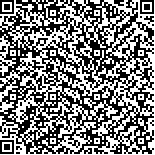| 摘要: |
| 基于对失能老人居家养老支持性
需求中物理环境需求的考虑,探究我国不同
年代既有住宅失能老人居室空间的光热环
境现状以及舒适性情况。文章以哈尔滨为
例,选取2000年前后建造的失能老人住宅
典型户型3户,对其居室空间的天然光照度、
温度、湿度、风速以及空气品质进行连续实
测,获得居室物理环境现状,分析其天然光
环境、热湿环境、光热环境以及空气质量情
况,并进行舒适性评价,发现其亟待改造的
物理环境因素。研究表明:一、2000年前住
宅居室采光效果差,天然光环境急需改善,
且当室内平均照度低于600 lx时,失能老人开
始普遍认为光环境舒适性降低;二、调研间,2000年后住宅居室室内外平均温度差低于2000年前住宅居室,室内温度与室外温度相关性
较2000年前住宅居室高,室内温度较不稳定,部分时间室内热湿环境情况落在 ASHRAE舒适
区以及夏季实际热舒适区间外,在获得更加稳定舒适的热湿环境方面仍需改进;三、居室空间
的光热环境有一定关联性且受外窗影响,如通过改造外窗提升室内环境质量需考虑光热环境平
衡问题,改造受限时也可通过调整功能布局以适应现有光热环境。本研究将为今后失能老人住
宅适老性环境改造提供更有针对性的研究基础。 |
| 关键词: 既有住宅居室空间 失能老人 光热环境 舒适性评价 空气质量 |
| DOI:10.13791/j.cnki.hsfwest.20210505 |
| 分类号: |
| 基金项目:国家自然科学基金青年基金项目(51508124) |
|
| Studies on Light and Heat Environment and Comfort Evaluation of Living Space of theDisabled Elderly in the Existing Residence |
|
LIU Ying,YU Jiayi,YU Ge
|
| Abstract: |
| This study focuses on the main activity space of the disabled elderly living
with diseases for a long time: living space. Based on the consideration of the physical
environment demand in the support demand of the disabled elderly for home care, this
study explores the current situation of the light environment, heat environment and
comfort of the living space of the disabled elderly in the existing residence in China in
different years through field survey, in order to provide more targeted ideas in helping
the disabled elderly to obtain good natural light environment and stable and comfortable
heat and humidity environment support in the future transformation practice of existing
residential environment for the disabled elderly, so that the disabled elderly can obtain
a higher quality of life in the period of home-based elderly care with diseases, and
then delay the development process of disability. According to the relevant survey and
analysis data, 84% of the elderly in China live in the residence built before 2000. Is the
living environment provided by the old houses suitable for the disabled elderly to live
for a long time Whether the living environment provided by the new houses is higher
than that provided by the old houses, in the future, what aspects should be focused on in
the environment transformation of the existing residence of the disabled elderly for the
purpose of improving environmental comfort? Around the above problems, this study
takes Harbin as an example, selects three typical house types of disabled elderly built
around 2000, of which five disabled elderly people with different degrees of disability
lived. Using the survey method of measuring the objective physical environment, natural
illumination, temperature, humidity, wind speed and air quality of the living space are
continuously measured to obtain the current situation of the physical environment. At the same time, the subjective questionnaire survey is combined to understand the real use feeling of the users. After that, analyses of its
natural light environment, heat and humidity environment, light and heat environment and air quality, and evaluations of the comfort of
natural light environment, heat and humidity environment, light and heat environment and air quality are in combination with relevant
specifications and subjective questionnaires, so as to find the physical environmental factors that need to be improved. The above research
shows that: 1) the living spaces built before 2000 are with poor natural lighting effects, and the natural light environment is in urgent need
of improvement. Moreover, when the average indoor illumination was lower than 600 Lx, the disabled old people began to generally believe
that the comfort of light environment was reduced. Therefore, in the future transformation of the existing residential environment, natural
illuminance meeting the comfort needs of the disabled elderly should be considered above 600Lx, when the actual situation is limited and
cannot be met, artificial lighting can be supplemented at specific locations according to the specific needs of users, so as to create a safe
and comfortable light environment; 2) during the investigation, the average indoor and outdoor temperature difference of living space built
after 2000 is lower than that built before 2000. The correlation between indoor temperature and outdoor temperature is higher than living
space built before 2000, and the indoor temperature is relatively unstable. In some times, the indoor heat and humidity environment for
part of the time falls outside the ASHRAE comfort zone and the actual heat comfort zone in summer, so it still needs to be improved in
order to obtain a more stable and comfortable heat and humidity environment. On the premise of maintaining the comfort of the heat and
humidity environment, adjustable shading equipment should be considered to further obtain a more stable heat and humidity environment;
3) the light and heat environment of the living space is related to a certain extent and is affected by the external windows. In the actual
transformation in the future, if it is necessary to improve the indoor environment quality through the transformation of the external
windows, then the balance between the light environment and the heat environment needs to be considered. When the transformation of
peripheral protective structure is limited due to actual conditions, the functional layout of the living space of the disabled elderly can also
be adjusted to adapt to the existing light and heat environment. |
| Key words: Living Space of Existing Residence Disabled Elderly Light and Heat Environment Comfort Evaluation Air Quality |


